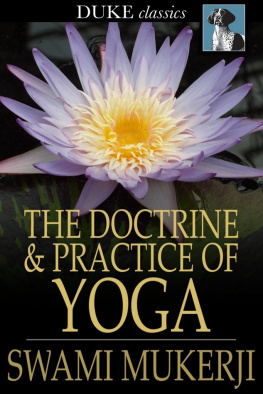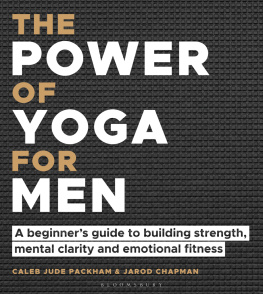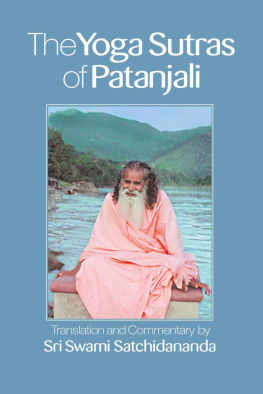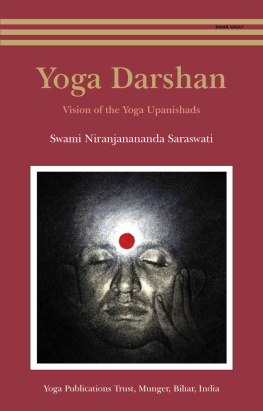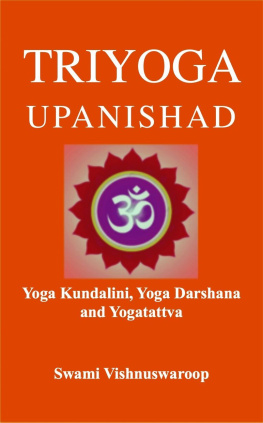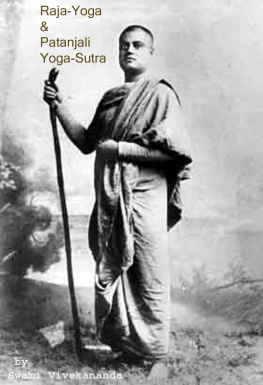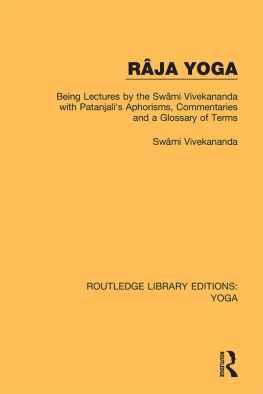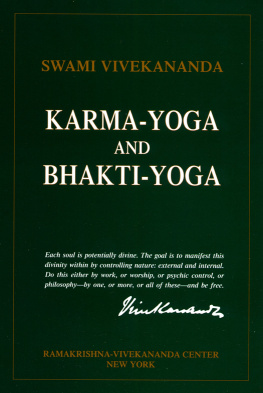Swami Vishnu-devananda - The Complete Illustrated Book of Yoga
Here you can read online Swami Vishnu-devananda - The Complete Illustrated Book of Yoga full text of the book (entire story) in english for free. Download pdf and epub, get meaning, cover and reviews about this ebook. year: 1995, publisher: Harmony, genre: Religion. Description of the work, (preface) as well as reviews are available. Best literature library LitArk.com created for fans of good reading and offers a wide selection of genres:
Romance novel
Science fiction
Adventure
Detective
Science
History
Home and family
Prose
Art
Politics
Computer
Non-fiction
Religion
Business
Children
Humor
Choose a favorite category and find really read worthwhile books. Enjoy immersion in the world of imagination, feel the emotions of the characters or learn something new for yourself, make an fascinating discovery.

- Book:The Complete Illustrated Book of Yoga
- Author:
- Publisher:Harmony
- Genre:
- Year:1995
- Rating:5 / 5
- Favourites:Add to favourites
- Your mark:
- 100
- 1
- 2
- 3
- 4
- 5
The Complete Illustrated Book of Yoga: summary, description and annotation
We offer to read an annotation, description, summary or preface (depends on what the author of the book "The Complete Illustrated Book of Yoga" wrote himself). If you haven't found the necessary information about the book — write in the comments, we will try to find it.
The Complete Illustrated Book of Yoga — read online for free the complete book (whole text) full work
Below is the text of the book, divided by pages. System saving the place of the last page read, allows you to conveniently read the book "The Complete Illustrated Book of Yoga" online for free, without having to search again every time where you left off. Put a bookmark, and you can go to the page where you finished reading at any time.
Font size:
Interval:
Bookmark:
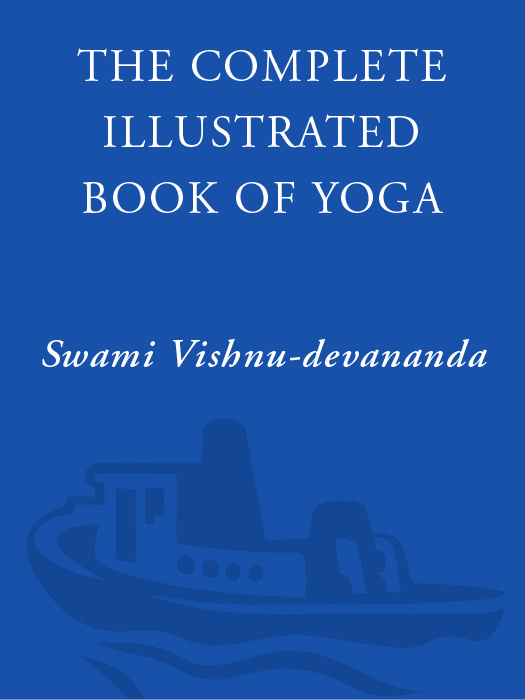
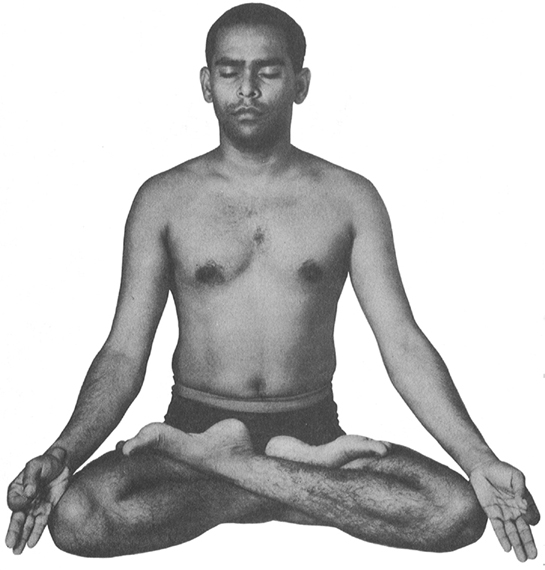
Charts

Copyright 1960, 1988 by the Julian Press, Inc.
All rights reserved. No part of this book may be reproduced or transmitted in any form or by any means, electronic or mechanical, including photocopying, recording, or by any information storage and retrieval system, without permission in writing from the publisher.
Published by Three Rivers Press, New York, New York.
Member of the Crown Publishing Group.
Random House, Inc. New York, Toronto, London, Sydney, Auckland www.randomhouse.com
THREE RIVERS PRESS is a registered trademark and the
Three Rivers Press colophon is a trademark of Random House, Inc.
Previously published by the Julian Press, Inc., in 1960 and by Harmony Books in 1988.
Library of Congress Cataloging-in-Publication Data is available upon request.
eISBN: 978-0-307-78620-3
v3.1
Dedicated to my Master Swami Sivananda
OM SRI GANESHAYA NAMAH
OM SARAVANABHAVAYA NAMAH
OM AIM SARASWATYAI NAMAH
OM NAMO BHAGAVATE SIVANANDAYA
OM HAMAH SIVAYA
OM NAMO NARAYANAYA
As I write this preface to the new edition of The Complete Illustrated Book of Yoga, humanity is plunging deeper and deeper into crisis, yet a bright future awaits. The transition between the 20th and 21st centuries may bring us to an unprecedented technological paradise. The door is opening to an age of supercomputers to help organize our complicated society and modified ecology; superconductors to minimize energy waste; and robots to perform work not fit for humans, thereby increasing our leisure time and life spans. New medical solutions will possibly arise to control AIDS and eliminate other terrible diseases. A time may come soon when we will be growing vegetables in space stations as well as in our houses, or we may find ourselves migrating to other planets, as the ancients migrated to new worlds.
Yet, we are still unable to deal with our minds. The world crisis is but a reflection of the chaotic state of the collective consciousness. The most positive action we can perform to contribute to the momentous task of bringing our planet back into balance is to start changing ourselves.
Positive, focused thoughts are much more powerful than negative, confused thoughts. No external technology can control surging emotions and imaginations. No type of alcohol, drugs (whether tranquilizers, sleeping pills, or wake-up pills), or other such instruments can hope to offer a long-term solution to epidemic mental weakness. These chemicals destroy not only the bodies and minds of the users, but also those of their offspring, creating genetic disturbances and unbalancing the mental vibration. Real peace comes only to those who can control the body and mind with proper self-discipline.
This book is presented as an offering to each individual to make the simple willful decision to live a divine life in harmony with the inextricable laws of nature. If there is the will and the desire to realize limitless spiritual potential, then the practical methods of Yoga self-discipline and mind control outlined herein will prove invaluable.
I have titled this book The Complete Illustrated Book of Yoga because Yoga is a complete science of self-discipline. Yoga balances, harmonizes, purifies, and strengthens the Body, Mind, and Soul of the practitioner. It shows the way to perfect Health, perfect mind control, and perfect peace with ones Self, the world, nature, and God. Millions of people have begun to practice Yoga through the application of the simple time-tested techniques presented in this book. Though the scientific terms and examples used to explain the theory of Yoga have been designed for the modern reader, I have been religiously true to the ancient teachings of Hatha Yoga, as well as other forms, such as Kundalini Yoga, Raja Yoga, and Jnana Yoga. I have invented nothing new, only presented this perfect science of self-development in a form comprehensible for an analytic-minded era.
The Yogi sees life as a triangle. Birth is the first point of this life triangle. Its upward line represents the growth period; the top dot, youth; the downward line, decay. The last point is death, but the base line of the triangle is life hereafter, which ends in birth again. The growth period, known as the anabolic process, reaches a plateau at about the age of 18 or 20 years. During the youthful period of life the rate of cell rejuvenation exceeds or equals cell decay. In a normal person, the body maintains this healthy, youthful state until about 30 years of age. At around the age of 35, the decaying or catabolic process begins to predominate, the anabolic process decreases, and the body machine starts its decline. This process later results in the state termed old age with its accompanying ills and despair, both physical and mental.
Yogis, however, say that we were not born merely to be subject to pain and suffering, disease and death. There is a far greater purpose to life. But the spiritual investigation of lifes purpose requires a keen intellect and strong will, the products of a healthy body and mind.
For this reason, the ancient sages developed an integral system to ward off or retard the decaying or catabolic process, and to keep the physical and mental faculties strong. By closely observing the life-style and needs of the modern men and women of this planet I have synthesized the ancient wisdom of Yoga into five basic principles, which can be easily incorporated into everyones own pattern of life. These principles are: (1) proper exercise; (2) proper breathing; (3) proper relaxation; (4) proper diet; and (5) positive thinking (deep philosophy) and meditation.
Proper exercise acts as a lubrication system to the joints, muscles, ligaments, tendons, and so forth, by increasing circulation and flexibility. Yogic exercise can be compared to no other system in its complete overhauling of the entire being. A Yoga Asana (or Posture) is meant to be held for some time (the term Asana means steady pose). Performed slowly and consciously, the Asanas not only produce physical benefits, but are mental exercises in concentration and meditation.
Yoga exercise focuses first on the health of the spine. The spinal column houses the center of the nervous system, the telegraphic system of the body. As a direct extension of the brain, the healthy spine aids in the health of the whole body. By maintaining the spines flexibility and strength through proper exercise, circulation is increased, the nerves are ensured their supply of nutrients and oxygen, and the body retains its youthful state. As a Chinese proverb states, Truly a flexible back makes a long life.
Asanas work on the internal machinery of the whole body, especially on such key pressure points as the Chinese acupuncture areas. Stimulation of these points increases the flow of nerve energy, or Prana (Sanskrit) or Chi (Chinese). The Asanas also affect the deeper and more subtle parts of the body. The internal organs receive massage and stimulation through the various movements of the Asanas and are toned into functioning more efficiently. As Yoga ).
Font size:
Interval:
Bookmark:
Similar books «The Complete Illustrated Book of Yoga»
Look at similar books to The Complete Illustrated Book of Yoga. We have selected literature similar in name and meaning in the hope of providing readers with more options to find new, interesting, not yet read works.
Discussion, reviews of the book The Complete Illustrated Book of Yoga and just readers' own opinions. Leave your comments, write what you think about the work, its meaning or the main characters. Specify what exactly you liked and what you didn't like, and why you think so.

